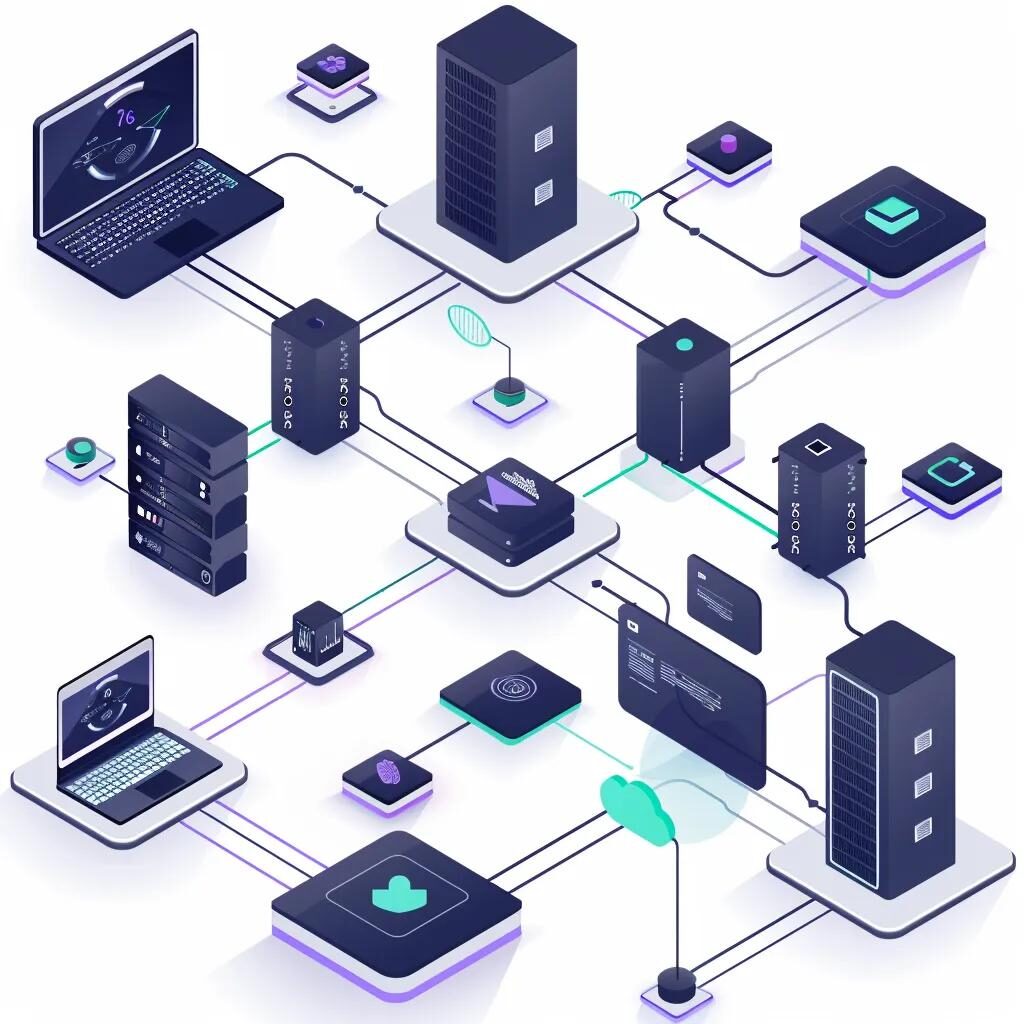
What Is HashiCorp Nomad and How It Works: A Complete Guide for Business Owners
Deploying applications at scale demands a workload orchestrator that combines simplicity with robust scheduling and resource management. HashiCorp Nomad is a unified scheduler for containerized and non-containerized workloads that reduces operational complexity and accelerates deployments. In this guide, business owners will learn Nomad’s core concepts, its simplified architecture and scheduling process, key features and benefits, real-world use cases, a strategic comparison with Kubernetes, implementation best practices, and how Hamilton DevCo can support a seamless Nomad adoption.
What Is HashiCorp Nomad? Definition and Core Concepts
HashiCorp Nomad is an open-source workload orchestrator and scheduler that enables organizations to deploy, manage, and scale applications across any infrastructure platform with a simple, single-binary agent. It abstracts compute resources into a unified pool, matching jobs and tasks to available capacity and ensuring efficient resource utilization for microservices, batch jobs, and system services.
What is HashiCorp Nomad and its role as a workload orchestrator?
HashiCorp Nomad functions as a centralized scheduler that receives job specifications and allocates compute resources based on constraint rules and affinities. By treating applications as declarative “jobs”—each comprising one or more “tasks”—Nomad orchestrates deployment, monitors health, and reschedules workloads automatically. This approach frees DevOps teams from manual provisioning and minimizes downtime.
Nomad’s Role in Orchestration
HashiCorp Nomad functions as a centralized scheduler, receiving job specifications and allocating compute resources based on constraints and affinities. This approach allows DevOps teams to avoid manual provisioning and minimize downtime, streamlining the deployment process.
HashiCorp, Nomad Documentation
This citation supports the article’s description of Nomad’s core function as a workload orchestrator.
How does HashiCorp Nomad support container orchestration and microservices?
Nomad natively integrates with container runtimes such as Docker and CRI-compatible engines to schedule, deploy, and scale containerized microservices. At the same time, it handles non-container workloads—Java JARs, binaries, and custom scripts—through its versatile driver plugin system. This uniform API for heterogeneous workloads ensures consistent deployment patterns across diverse application architectures.
What are the key components of Nomad’s architecture?

Nomad’s architecture relies on four primary entities—servers, clients, jobs, and tasks—interacting within a datacenter context to deliver resilient scheduling:
This unified model fosters predictable performance and streamlines operational workflows across cloud, on-premises, and edge environments.
HashiCorp Nomad: What It Is and How It Works for Business Owners
HashiCorp Nomad’s scheduling mechanism begins with job submission to a Nomad server, continues through resource evaluation and placement, and concludes with task execution on client nodes. This end-to-end orchestration provides businesses with fast, reliable deployments and dynamic scaling capabilities.
How do Nomad servers and clients interact to manage workloads?
Nomad servers maintain cluster state via the Raft consensus protocol, handling leader election and job evaluations. Clients register available CPU, memory, and I/O capacity, periodically reporting to servers using remote procedure calls (RPC). When a job is accepted, the server assigns allocations to client nodes that meet resource and placement constraints, initiating secure gRPC sessions for task dispatch.
What is the Nomad job and task lifecycle?
The Nomad workflow follows five stages:
- Submission: A job is defined in HCL or JSON and submitted to the Nomad API.
- Evaluation: Servers validate constraints, resource requirements, and dependency graphs.
- Scheduling: Allocations are placed on suitable clients based on scheduling algorithms and affinity rules.
- Execution: Clients download artifacts, launch tasks, and stream logs back to the servers.
- Termination: Completed or failed tasks trigger re-evaluations, auto-healing, or scaledown operations.
This lifecycle ensures automated recovery and consistent application status tracking for IT teams.
How does Nomad handle workload scheduling and resource management?
Nomad leverages multiple scheduling strategies—binpack, spread, and affinity—to optimize resource utilization:
- Binpack: Packs tasks into the smallest number of nodes to reduce idle capacity.
- Spread: Distributes tasks evenly to maximize fault isolation.
- Affinity: Respects proximity, datacenter, or custom tag preferences for regulatory or performance reasons.
Constraint expressions and resource reservations (CPU, memory, disk) guarantee that critical workloads run with predictable performance and minimal contention.
What integrations enhance Nomad’s functionality?
A rich ecosystem of integrations extends Nomad’s capabilities across the HashiCorp stack and third-party tools:
- Consul: Provides service discovery, health checks, and multi-region DNS federation.
- Vault: Delivers secure secret injection and dynamic credentials for workloads.
- Terraform: Automates infrastructure provisioning and cluster scaling alongside Nomad job deployments.
- Custom Plugins: Enables workload drivers (e.g., Java, QEMU) and scheduling filters for specialized use cases.
These integrations align Nomad with end-to-end DevOps workflows, reducing toolchain complexity and accelerating time to production.
What Are the Key Features and Benefits of HashiCorp Nomad for Businesses?
HashiCorp Nomad combines enterprise-grade features with a lightweight footprint, delivering streamlined operations, cost savings, and consistent application delivery across any environment.
What are the main features of HashiCorp Nomad?
Below is an overview of Nomad’s principal capabilities:
Each feature contributes to a unified orchestration platform that maximizes uptime and minimizes operational overhead.
How does Nomad improve operational efficiency and reduce costs?
Nomad automates routine tasks—deployment, scaling, health monitoring—and consolidates infrastructure silos into a single scheduling plane. By minimizing idle resources through binpack scheduling and integrating with Terraform workflows, organizations can reduce cloud spend and internal maintenance effort. This automation frees teams to focus on innovation rather than manual provisioning.
Why is Nomad scalable and flexible for diverse workloads?
Nomad’s multi-region federation, placement constraints, and plugin-based drivers support homogeneous clusters that run microservices, big data jobs, and legacy services side by side. Its lightweight client footprint and minimal operational dependencies make it ideal for hybrid-cloud scenarios, ensuring business continuity and rapid workload portability.
What business outcomes can be expected from using Nomad?
Organizations adopting Nomad typically see:
- 30–50% faster deployment cycles through automated job pipelines
- 20–40% infrastructure cost savings via binpack and autoscaling
- Enhanced reliability with cross-region failover and self-healing
- Improved developer satisfaction from consistent, declarative workflows
These outcomes translate directly into measurable ROI, operational agility, and competitive differentiation.
What Are Common Use Cases for HashiCorp Nomad in Business Environments?

HashiCorp Nomad addresses a spectrum of enterprise scenarios—from microservices deployment and batch processing to legacy modernization—making it a versatile choice for business-critical applications.
How is Nomad used for microservices deployment?
Dev teams define microservices as Nomad jobs with task groups for each containerized component. Nomad’s service discovery integration with Consul ensures that new instances register automatically, enabling blue-green and canary deployments without complex orchestration scripts.
How does Nomad support batch processing and CI/CD pipelines?
Nomad schedules batch jobs—data transforms, AI model training, report generation—according to resource availability and time windows. Integrated with CI/CD tools like Jenkins or GitLab CI, Nomad triggers deployments or test suites automatically, delivering end-to-end pipeline automation.
Can Nomad modernize legacy applications?
Legacy binaries and scripts can be wrapped as Nomad tasks, migrating traditional workloads onto modern, container-orchestrated clusters. This approach removes the need for complex virtualization stacks, accelerates infrastructure consolidation, and extends the life of existing applications.
What industry-specific examples demonstrate Nomad’s impact?
- A financial services firm reduced overnight batch runtimes by 60% using binpack scheduling for ETL pipelines.
- A SaaS provider achieved sub-minute failover across three regions by federating Nomad clusters with Consul.
- A manufacturing client consolidated on-premises workloads into hybrid-cloud clusters, cutting hosting costs by 35%.
These examples highlight Nomad’s flexibility and real-world value for diverse business sectors.
How to Choose Between HashiCorp Nomad and Kubernetes: A Business Perspective
Selecting the right orchestrator hinges on organizational priorities—simplicity and heterogeneity versus ecosystem breadth and extensibility. Understanding key differences ensures an informed decision aligned with strategic goals.
What are the key differences between Nomad and Kubernetes?
Nomad vs. Kubernetes Comparison
Nomad excels in environments requiring multi-workload orchestration and operational simplicity, while Kubernetes offers a richer plugin ecosystem for container-first architectures. The choice between the two depends on the specific needs of the organization.
HashiCorp, Nomad vs. Kubernetes
This citation supports the article’s comparison of Nomad and Kubernetes, highlighting their key differences and ideal use cases.
When is Nomad the better choice for businesses?
Nomad is ideal for teams seeking a turnkey scheduler that handles containers and legacy jobs uniformly, for organizations with limited DevOps resources, or for hybrid-cloud deployments that require cross-region orchestration with minimal overhead.
What are the advantages of Kubernetes for large-scale container orchestration?
Kubernetes provides built-in capabilities—sidecar patterns, network policies, CRDs, Helm charts—and benefits from a vast community and marketplace of operators. These features empower enterprises to implement complex microservices architectures at massive scale.
How do Nomad and Kubernetes integrate with existing DevOps workflows?
Both orchestrators integrate with infrastructure as code tools like Terraform. Nomad jobs use definitions alongside Terraform modules, while Kubernetes leverages YAML manifests and Helm charts. CI pipelines can target either platform through specialized plugins and API calls, enabling parallel adoption and gradual migration strategies.
How to Implement HashiCorp Nomad: Getting Started and Best Practices
A successful Nomad deployment follows a phased approach—cluster setup, integration with key HashiCorp tools, operational hardening, and continuous optimization. Adhering to best practices reduces risk and accelerates time to value.
What are the initial steps to deploy HashiCorp Nomad?
- Install the Nomad binary on server and client nodes.
- Configure server cluster parameters (raft, encryption keys, datacenter).
- Bootstrap the first server, join additional servers to form a resilient quorum.
- Register client nodes with appropriate resource reservations.
- Submit a sample job to validate scheduling and networking.
Establishing a repeatable, version-controlled deployment pipeline ensures consistency across environments.
How to integrate Nomad with other HashiCorp tools like Consul and Vault?
Connect Nomad clients to a Consul cluster for automated service discovery and health checking. Enable the Vault integration by configuring Nomad’s Vault stanza, allowing jobs to request dynamic secrets at runtime. This tight coupling centralizes configuration, security, and service registration.
What are common challenges in Nomad adoption and how to overcome them?
- Networking Complexity: Use Consul for seamless service mesh integration.
- Security Hardening: Enable mTLS, ACL policies, and Vault token rotation.
- Monitoring and Logging: Integrate with Prometheus and the ELK stack for centralized observability.
- Team Familiarity: Provide hands-on workshops and runbooks for HCL job authoring.
Addressing these areas early prevents operational bottlenecks and fosters a smoother rollout.
How can Hamilton DevCo support your Nomad implementation?
Hamilton DevCo offers end-to-end DevOps consulting services—cluster design, secure Vault integration, automated Terraform pipelines, and onsite training—to help business owners accelerate Nomad adoption. Schedule an appointment through our Nomad consulting page to assess your environment and receive a tailored implementation roadmap that aligns with your strategic objectives.
What Are Frequently Asked Questions About HashiCorp Nomad?
This section delivers concise, snippet-ready insights that address the most common queries business owners encounter when evaluating Nomad.
What is HashiCorp Nomad used for?
HashiCorp Nomad is used for orchestrating and scheduling containerized and non-containerized workloads across clusters, enabling efficient application deployment, resource management, and automated scaling for microservices, batch processing, and legacy applications.
Is HashiCorp Nomad open source?
Yes, HashiCorp Nomad is an open-source project released under the Mozilla Public License 2.0, with a vibrant community contributing enhancements, integrations, and enterprise-grade features.
How does Nomad compare to Kubernetes in terms of ease of use?
Nomad offers a simpler operational model with a single-binary agent and fewer architectural components, which shortens the learning curve and reduces day-to-day maintenance compared to Kubernetes’ multi-component control plane.
Can Nomad manage both containerized and non-containerized workloads?
Nomad manages containers via Docker or CRI drivers and non-container workloads—binaries, scripts, VMs—via plugin drivers, offering a unified scheduling API for heterogeneous application stacks.
How does Nomad fit into a DevOps strategy?
Nomad integrates seamlessly with Terraform for infrastructure provisioning, Consul for service discovery, and CI/CD pipelines for automated deployments, forming a cohesive, infrastructure-as-code driven DevOps toolchain that accelerates software delivery.
Adopting HashiCorp Nomad empowers business owners to simplify orchestration, reduce infrastructure costs, and achieve consistent deployments across any environment. Its lightweight architecture, flexible plugin system, and robust integrations deliver measurable improvements in operational efficiency and reliability. By partnering with Hamilton DevCo, organizations can leverage expert guidance, secure implementations, and customized workflows—ensuring a smooth transition to a modern, automated scheduling platform that aligns with strategic goals. Schedule your consultation today to unlock the full potential of HashiCorp Nomad.
Explore my latest courses


